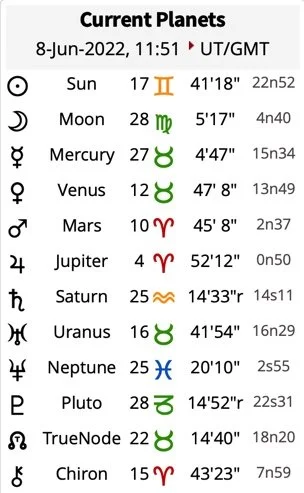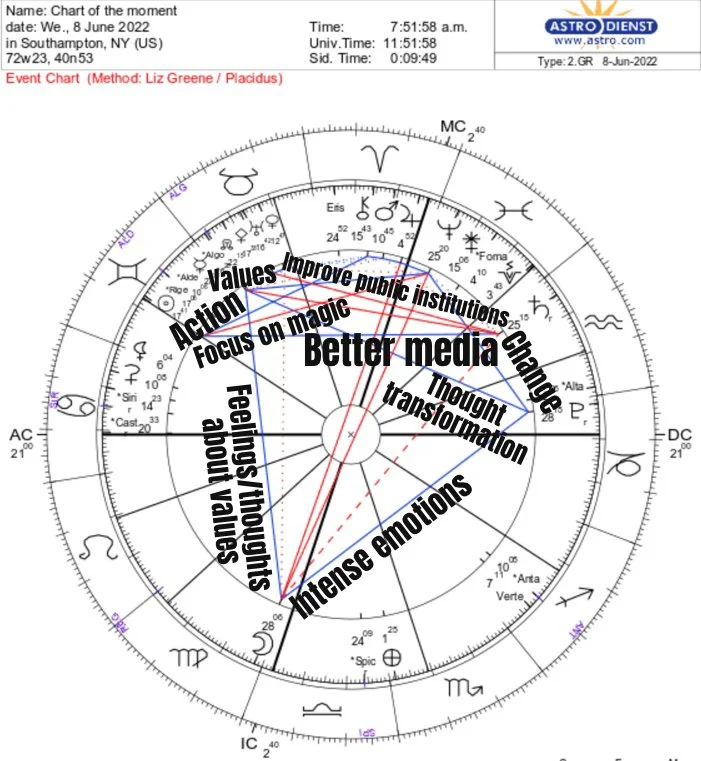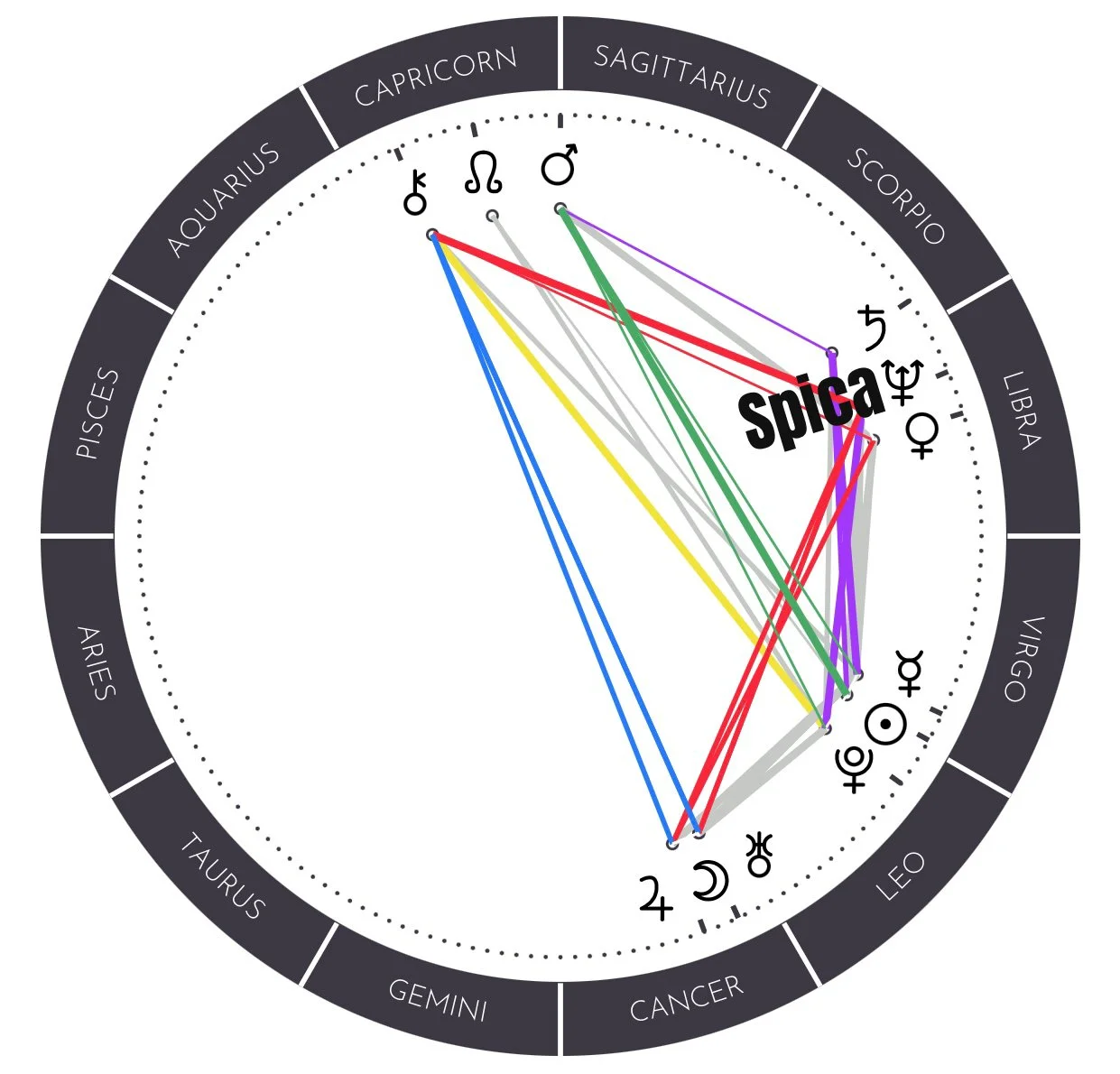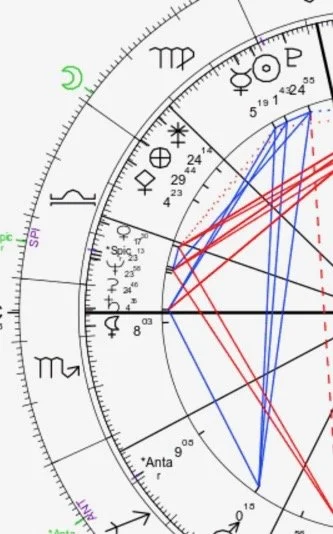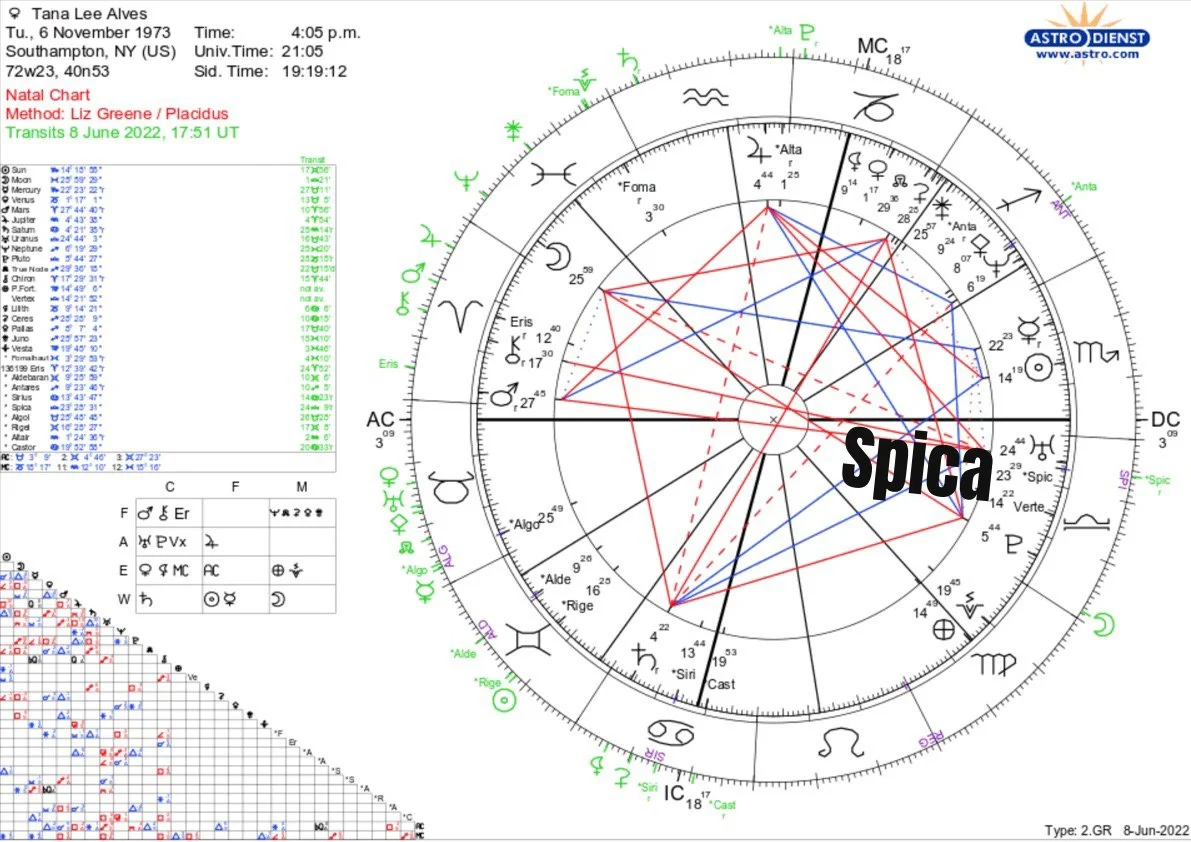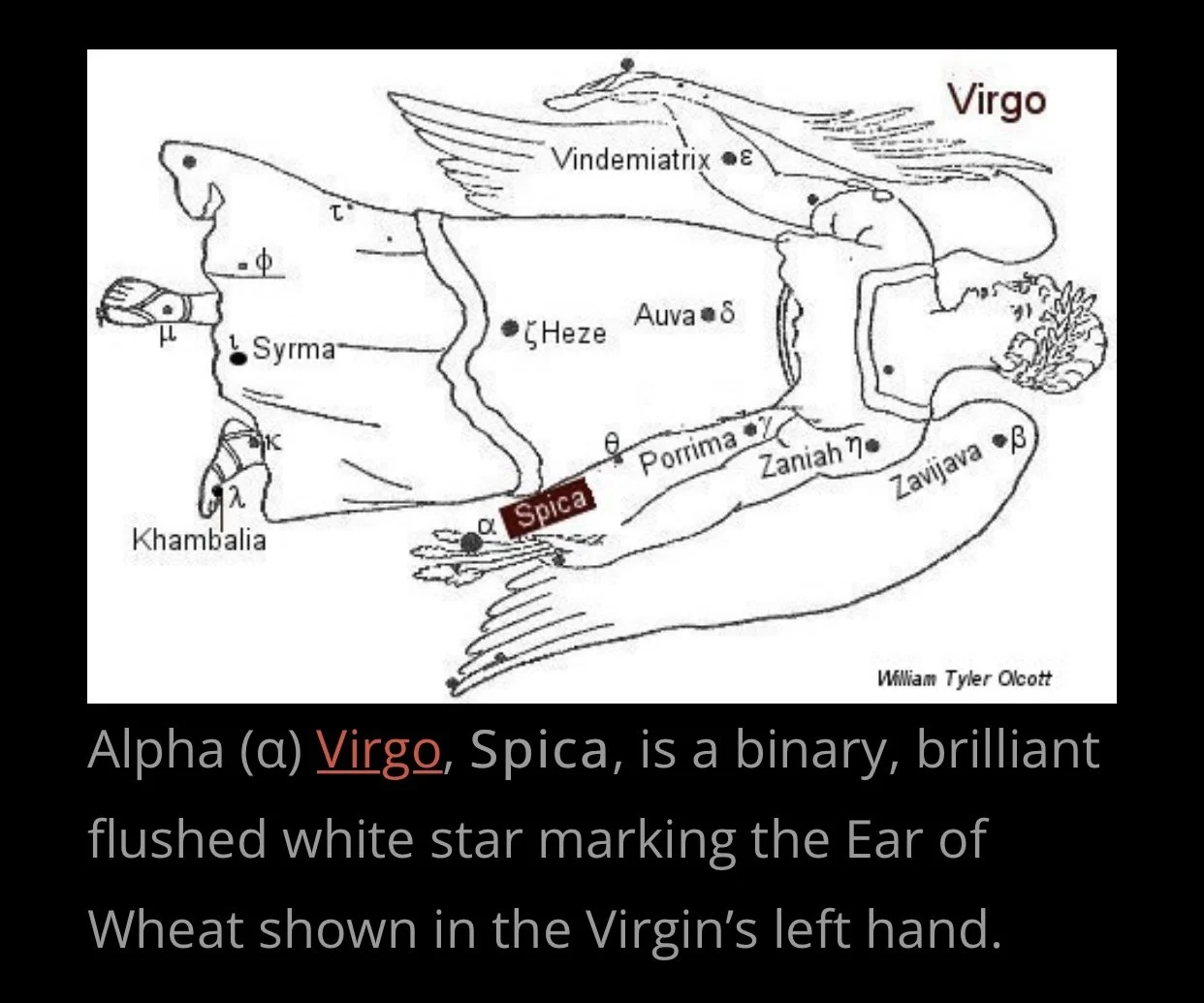The following is shared from cafeastrology.com
Wednesday, JUNE 8
The Moon continues its transit of detail-oriented Virgo until 11:24 AM EDT, and we’re ready to solve problems. From 11:24 AM forward, the Moon transits Libra, sensitizing us to social cues and relationship matters. Those things that are out of balance or unfair can be more noticeable.
The Moon opposes Jupiter this evening, which is “borrow from the future” energy, and we should be careful not to commit to something for which we don’t yet have the resources.
Also today, there can be a strong sense of duty associated with loved ones or caring for people in our lives, perhaps without a feeling that we are appreciated for our efforts. We may need to make decisions about family, health, or nutrition.
The void Moon occurs from 8:09 AM EDT, with the Moon’s last aspect before changing signs (a trine to Pluto), until the Moon enters Libra at 11:24 AM EDT.
Learn about the symbols here.
I plan on looking into the fixed star Spica pertaining to Koand’s natal chart on my stream tonight.
Above you can see a closer look at Koand’s stellium.
. . .
What is the fixed star Spica?
Spica or the Ear of Wheat, Alpha Virginis, 23°58' Libra, that which is at the tip of the left hand (in sinistra manu), the Ear of the Wheat (Spica Virginis), or Arista: according to Ptolemy, the Ear of the Wheat is of the nature of Mercury and Mars, according to Fludd, of the nature of Mars and Venus, and according to Leowicz, of the nature of Venus and Mercury. Spica, the Ear of the Wheat, gives a taste for the countryside, or for arts related to products of the earth. It endows with sculpture talents, as well as an inclination for agriculture and cooking. It brings success, riches, love for the arts and science, erudition, and precision. In general, Spica, the Ear of the Wheat, is a beneficial star, unless it is very adversely aspected.
Spica, the Ear of the Wheat, gives a taste for the countryside, or for arts related to products of the earth. It endows with sculpture talents, as well as an inclination for agriculture and cooking. It brings success, riches, love for the arts and science, erudition, and precision. In general, Spica, the Ear of the Wheat, is a beneficial star, unless it is very adversely aspected.
. . .
Spica Star Astrology
Fixed star Spica gives success, renown, riches, a sweet disposition, love of art and science, unscrupulousness, unfruitfulness and injustice to innocence. According to Ptolemy, it is of the nature of Venus and Mars (shameless, vain, self-indulgent, abandoned, violent passions, danger of seduction, riotous living but often self-respecting and decent.)
Spica is one of the 15 Behenian Fixed Stars. Its image is a bird, or a man laden with merchandise. It gives riches, overcomes contentions, and removes scarcity and mischief. Rules emerald, sage, trefoil, periwinkle, mugwort and mandrake. [1]
Spica, as already said, is one of the truly great stars in the sky, the one which gave us our word ‘star’, and at least as important as the four archangel stars…The considerable distance between Spica and its nearest neighbors has inspired some cultures to call it ‘The Lonely One’ and names like that, often to distinguish it from the equally prominent Arcturus, on almost the same Zodiacal longitude but higher in the sky and much closer to its neighbors in Bootes.
Astrologically, Spica is a ‘Good Star’, and no doubt it still is, if we don’t contemplate our descendants’ fates in 5 million years time. Our friend classified it as a Venus-Mars type, the only one of that kind. The combination of the opposite sexes in the one star must inspire a further thought about the androgynous qualities we have already noted with Virgo, but it is doubtful that Ptolemy noted that. As the star of the grain harvest, it is the provider of our material needs, and indeed it does always show up well in that respect. There is, however, a word of warning to go with it: We only reap harvest if we have first sown the seed and cared for the fields, and what we reap must last us, and all who labored in our fields, until the next harvest is ready. He does not do so well from Spica who reaps what he has not sown, uses it profligately, or denies to others their share in his good fortune. As though to rub this in quite firmly, Arcturus in the sky above the Virgin’s Hand is the prime star of the much rougher character, the Herdsman, just as ready to take care of his herd but not to stand any nonsense from them.
Spica is also noted for its spiritual and religious qualities, as we must expect after all we have seen about Virgo, and indeed people with this star strong in their horoscopes do very often gain high place in those fields of life. Psychic awareness is also above average in such people, especially if the more sensitive planets, Moon, Venus, Neptune or Lilith are conjunct Spica. [3]
To Spica are ascribed honors and fame. Spica is of marked good fortune for scientists, writers, artist-painters, sculptors and musicians. If Spica is on the Asc or Meridian and conjunction Jupiter and Venus, promise is given even to people of humble origins to enjoy protection, preferment and even wealth. In conjunction with Mercury or Venus and positioned on the Meridian or Asc, Spica gives artistic skill, drawing ability, musical talent and a good sense for literature and the sciences.
However, if Spica is placed in angular houses and conjoined with Saturn, Mars, Uranus, Neptune or Pluto, and if these planets are afflicted, a rise followed by a downfall with tragic ending could be the result. In 1923, when, as a result of inflation in Germany, many people became poverty stricken, Spica was bound up with Saturn. In a personal cosmogram, Spica means refinement. Such people have a noble bearing. Increased erotic tension, usually given with a Venus-Mars interpretation, is not the case with Spica, but a tendency to sublimate these powers and turn them into artistic and creative channels is indicated. [4]
Spica star rules the navel in the human body. [5]
Virgo Constellation
Ptolemy makes the following observations; “The stars in the head of Virgo, and that at the top of the southern wing, operate like Mercury and somewhat like Mars: the other bright stars in the same wing, and those about the girdle, resemble Mercury in their influence, and also Venus, moderately . . . those at the points of the feet and at the bottom of the garments are like Mercury, and also Mars, moderately.” By the Kabalists it is associated with the Hebrew letter Gimel and the 3rd Tarot Trump “The Empress.” [1]
This constellation is indicative of an abundance in harvest and a fruitfulness of agriculture in general. But when prominent in the charts of eclipses it portends events concerning kings (heads of state) and in this regard can be an ill omen indeed. [2]
In astrology this constellation and Gemini were the House of Mercury. But usually, and far more appropriately, Virgo’s stars have been given over to the care of Ceres, her namesake, the long-time goddess of the harvest. For her astrological colors Virgo assumed black speckled with blue; and was thought of as governing the abdomen in the human body, but always as an unfortunate, sterile sign. The appearance of a comet within its borders implied many grievous ills to the female portion of the population. [6]
. . .
Click here to learn more about Spica.
. . .
Click here to learn why a star associated with the constellation Virgo is considered to be in Libra on these astrological charts.
. . .
How about Neptune Conjunct Spica?
Neptune conjunct Spica: Well-born, comfortable surroundings, always sufficiently well off, associated with companies, gain through legacies, favorable for domestic matters, somewhat fast and extravagant, does not live to old age.
Spica is Conjunct Uranus in my natal chart.
Uranus conjunct Spica: Mediumistic, popular, business connected with ornaments, gain through marriage, fortunate, sudden natural death.

